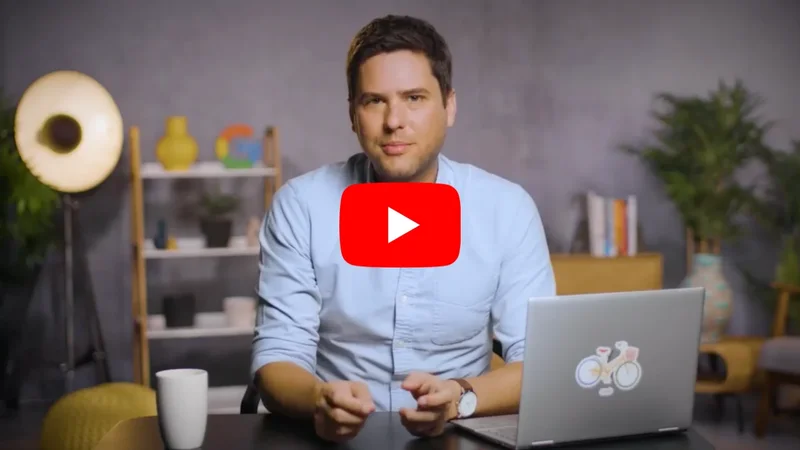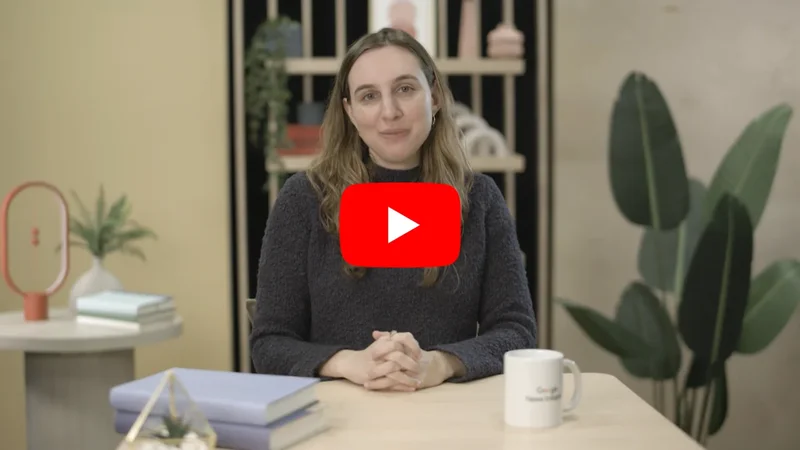Data Source: Election Databot.
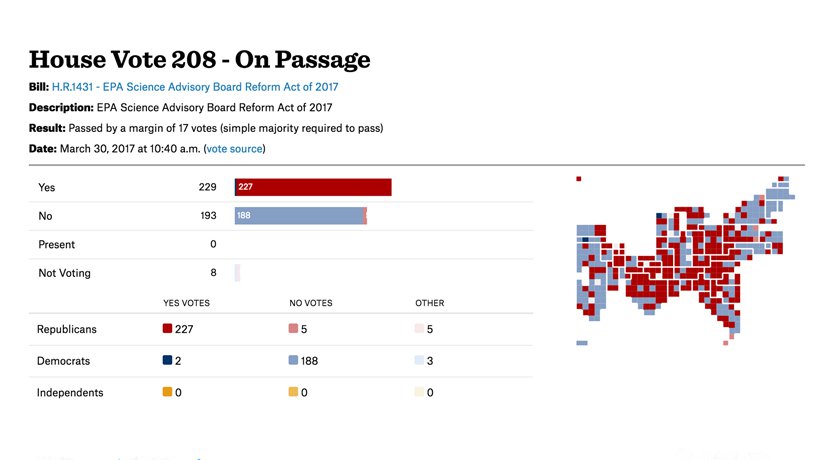
A robust tool to help journalists cover U.S. elections.

An election data hub created by ProPublica and Google News Initiative.
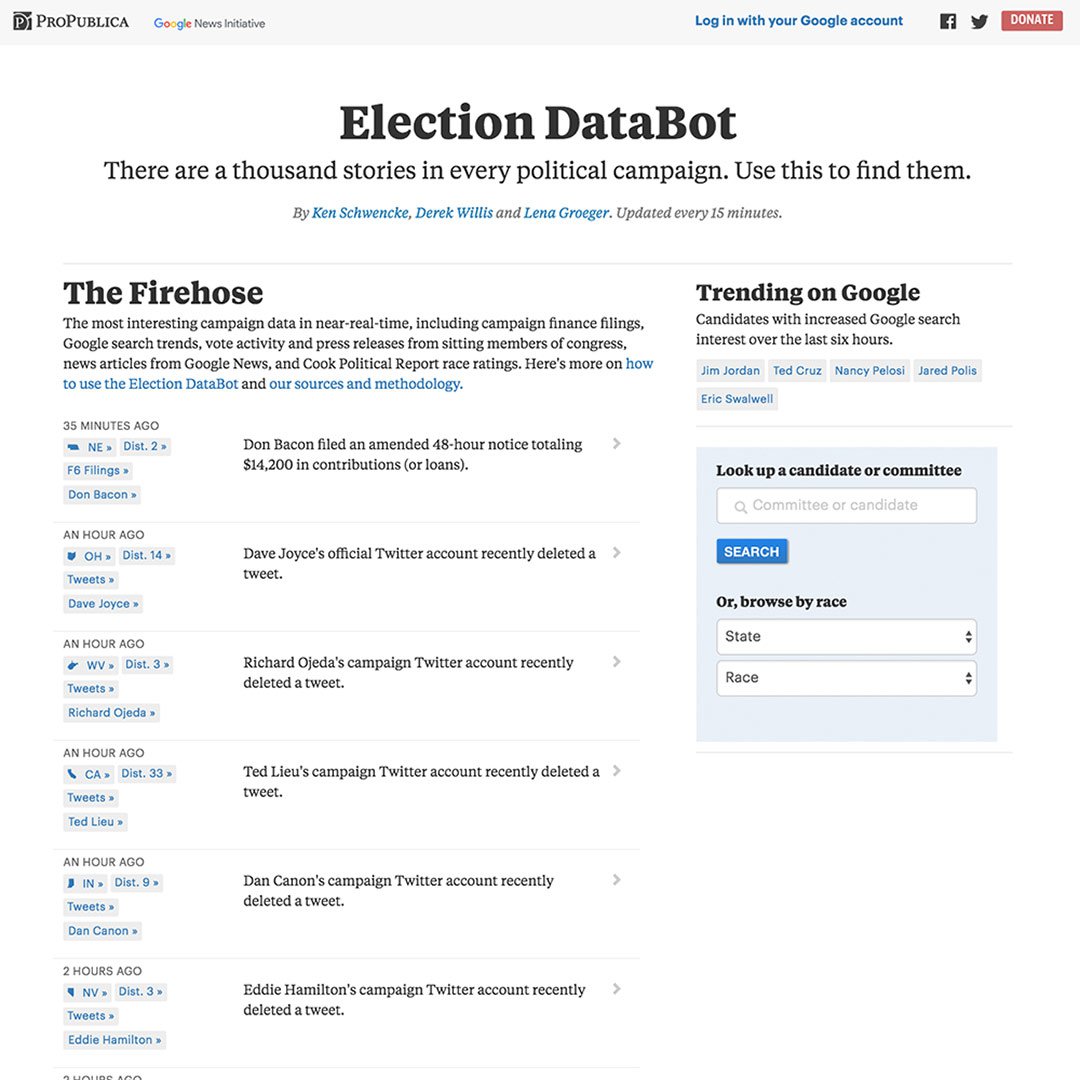
There are countless stories to tell about U.S. political campaigns—and data can help you tell them. In collaboration with the public interest journalism nonprofit ProPublica, we created Election Databot to help you find the most interesting data in near real time about presidential and congressional candidates in the U.S.

Stay up to date with “The Firehose.”
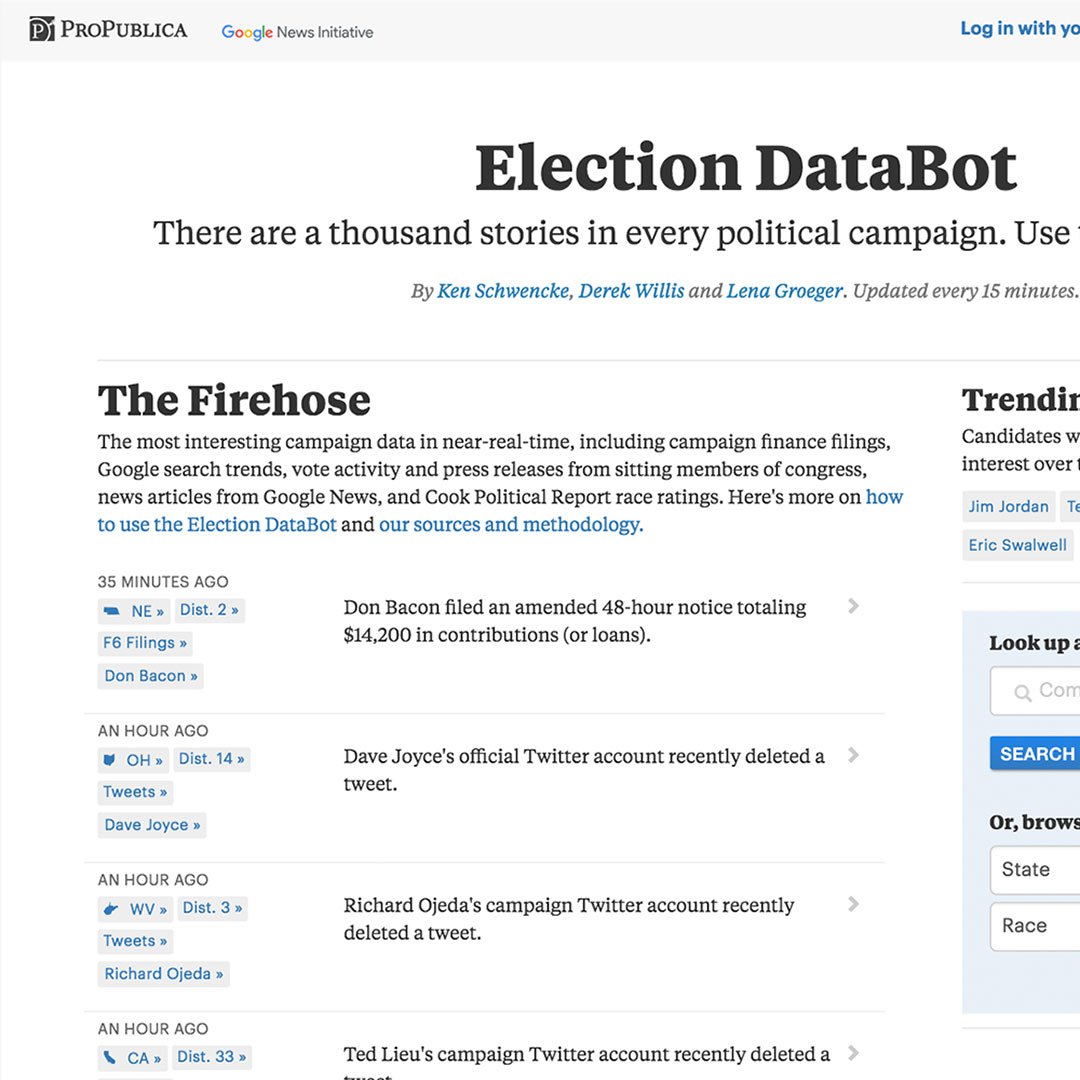
The centrepiece of the Databot is the Firehose, a stream of information related to U.S. elections that is updated every 15 minutes and pulled from a variety of sources. Here, you’ll find the most interesting data including campaign finance filings, Google search trends, new polls, forecasts from 538, Cook Political Report race ratings and vote activity from sitting members of Congress. It will tell you when a super PAC spends money in a race you care about, when an incumbent member of Congress is the only person to vote against a piece of legislation, when key polls change, and much more.
The Databot uses information from multiple high-quality, nonpartisan sources, including government and commercial websites. To learn about our methodology, read this article on our sources.

Analyzing campaign finance data.
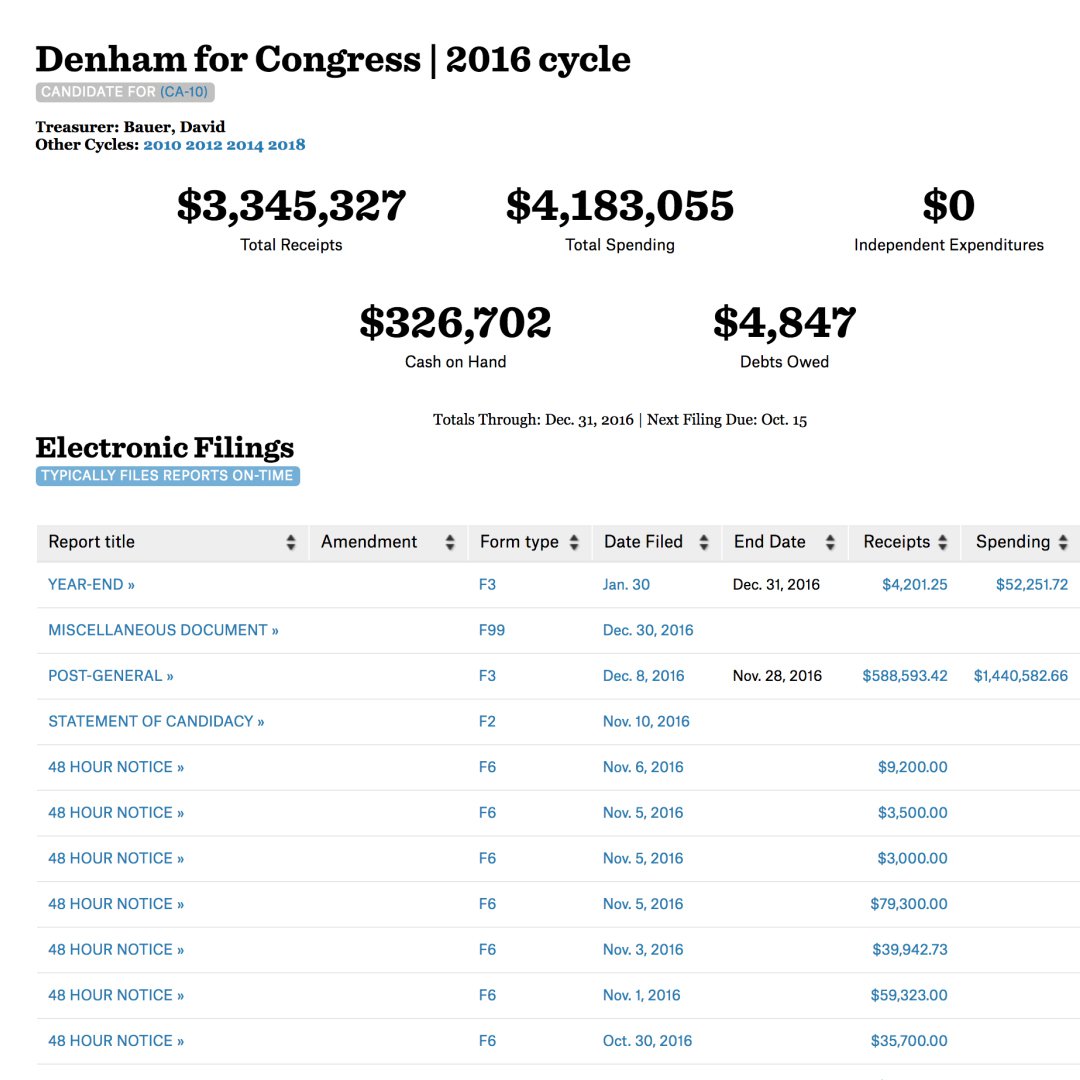
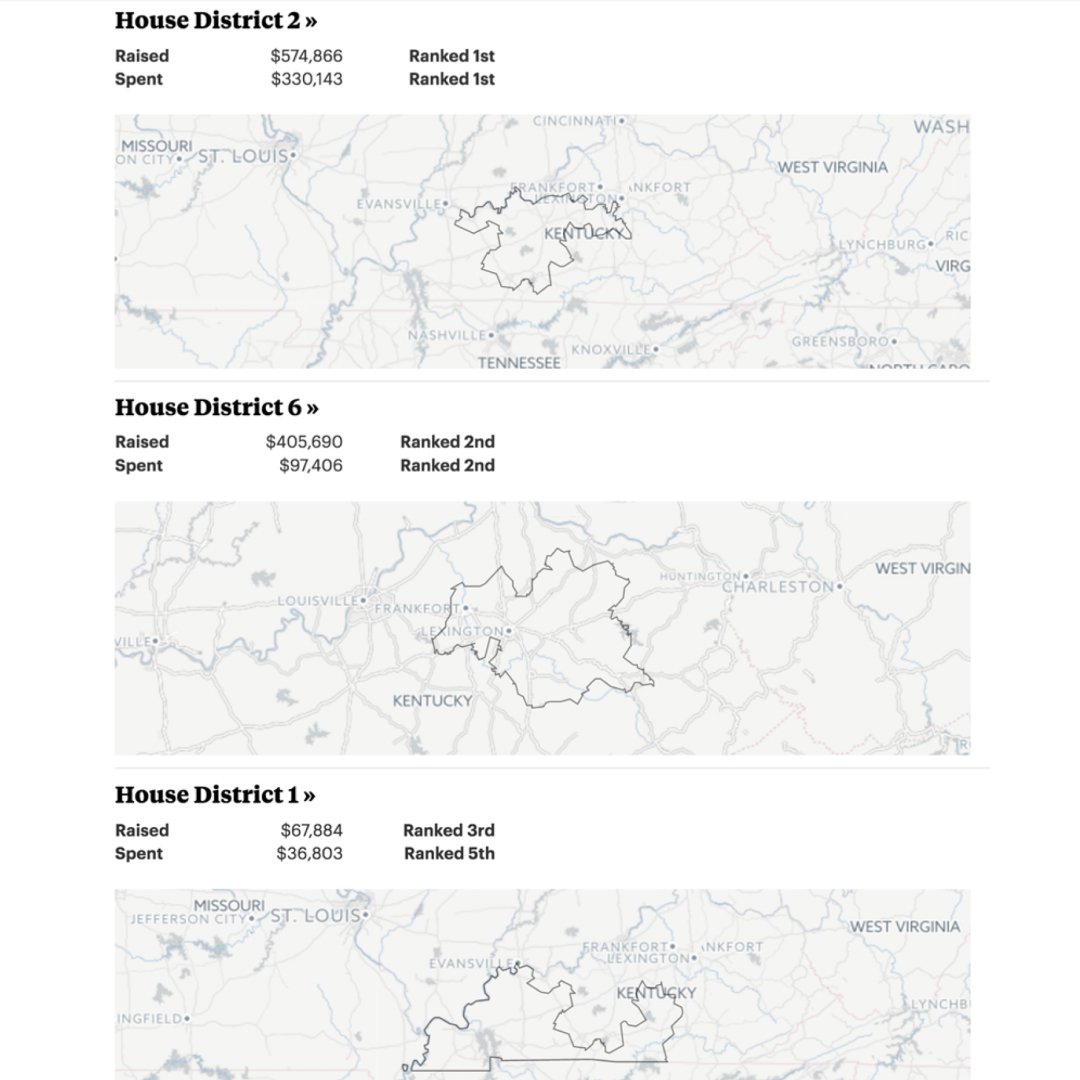

Our Firehose draws from a companion tool, the Federal Election Commission (FEC) Itemizer, to provide detailed data about campaign finance filings. Learning to differentiate and interpret these filings can help you find stories.
- Comparing candidates and races. Election Databot ranks House and Senate candidates in terms of money raised and spent, both within their states and nationally.
Comparing candidates and races. Election Databot ranks House and Senate candidates in terms of money raised and spent, both within their states and nationally.
Knowing what organizations are spending money in a race. You can track a race or candidate, so you get alerts when super PACs, and/or other committees spend money to influence an election. You also can track individual committees, seeing where and when they spend money in races.
Seeing late shifts in campaign donations. In the final weeks before a state or general election, House and Senate candidates are required to file reports to the FEC within 48 hours of receiving a contribution of $1,000 or more. These “48-Hour” reports can show that a candidate’s campaign is seeking donations from congressional colleagues, family members and out-of-state donors and can be an indication that a campaign believes it has a more difficult race than expected. For example, the string of 48-Hour reports by then incumbent Kansas Republican Tim Huelskamp included contributions from his mother. Soon after, Huelskamp lost his primary.“the string of 48-Hour reports by then incumbent Kansas Republican Tim Huelskamp” needs to be hyperlinked with this URL: http://docquery.fec.gov/cgi-bin/forms/C00413096/1088054/f65



Knowing what organisations are spending money in a race.
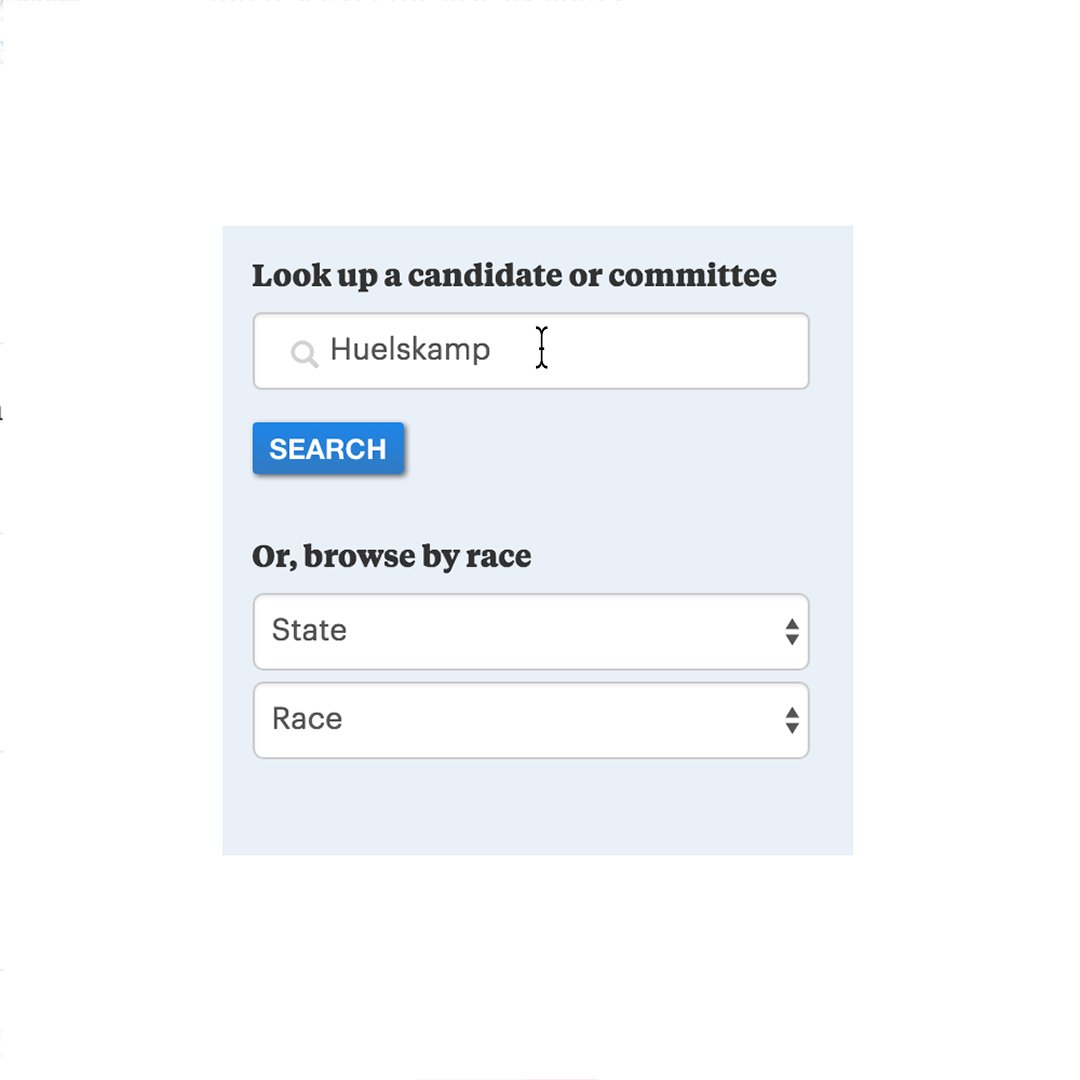
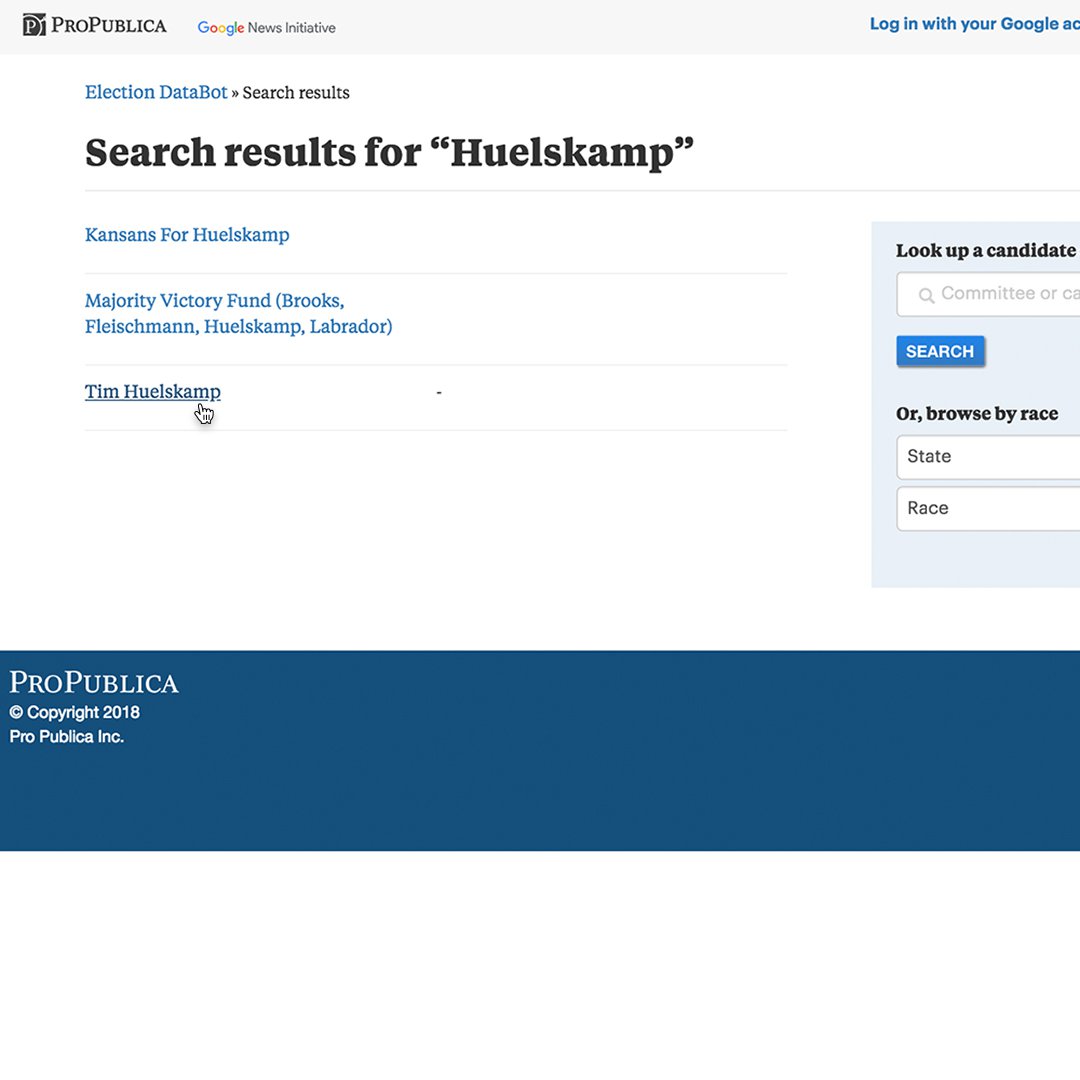
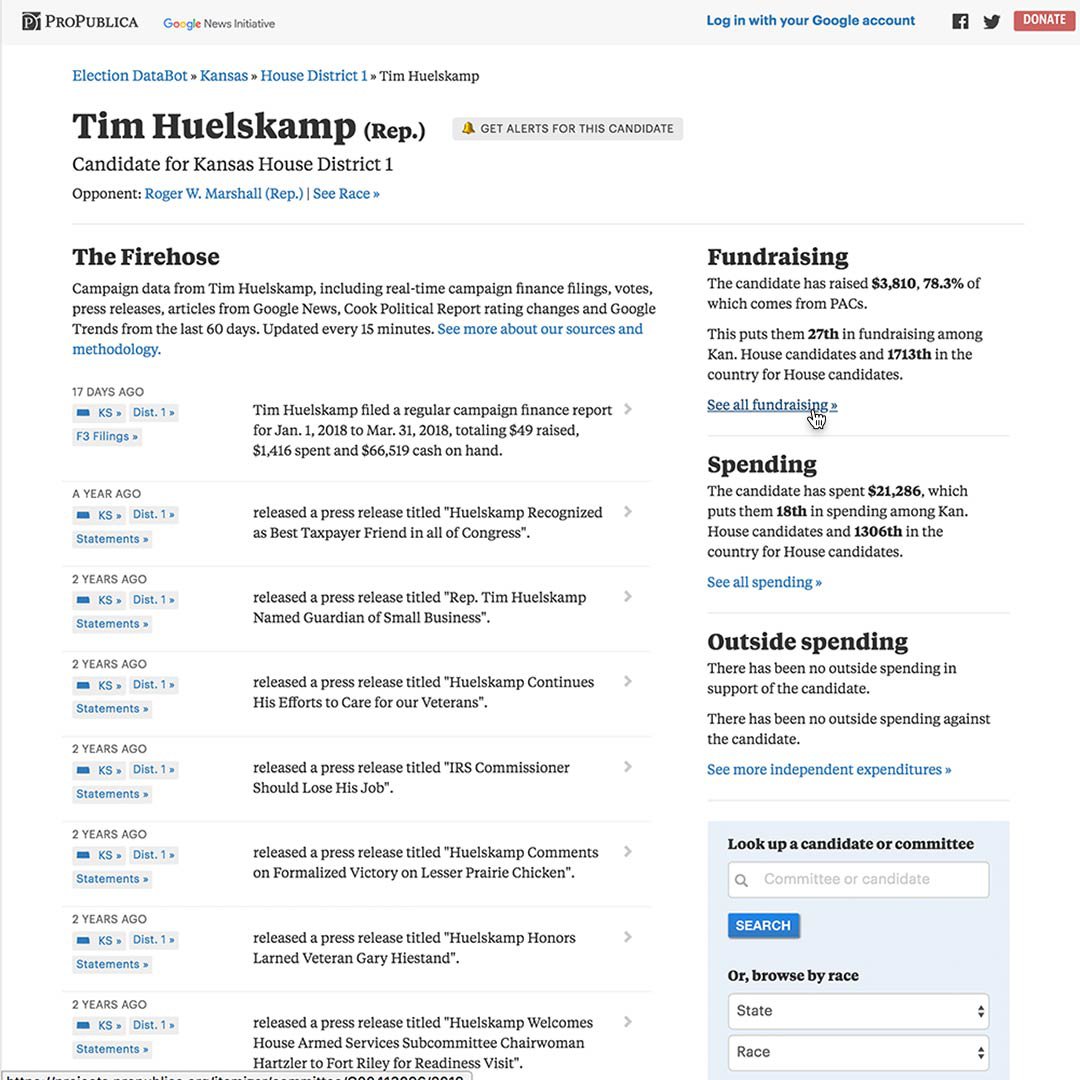
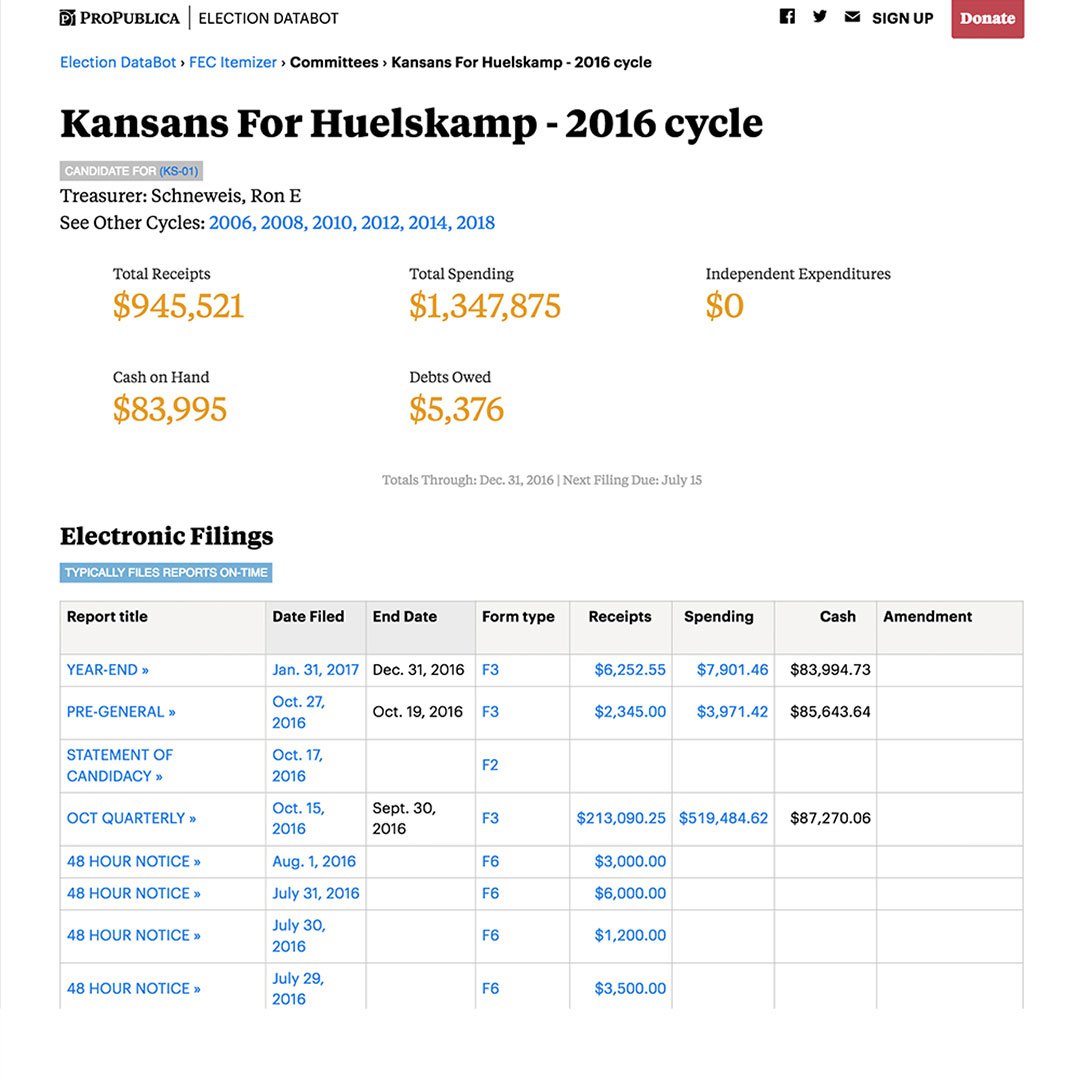
You can track a race or candidate, so you get alerts when super PACs, and/or other committees spend money to influence an election. You also can track individual committees, seeing where and when they spend money in races.
Say you’re writing a story on fundraising for Eric Swalwell, Democratic candidate for California’s 15th district.
On the homepage, type the candidate’s name into the search field.
You’ll land on an overview page that features the latest stories in The Firehose as well as links to detailed spending info in the right sidebar.
Click See all fundraising in the right sidebar.
Here you’ll find how much he’s received in contributions and how much he has spent campaigning.




Seeing late shifts in campaign donations.
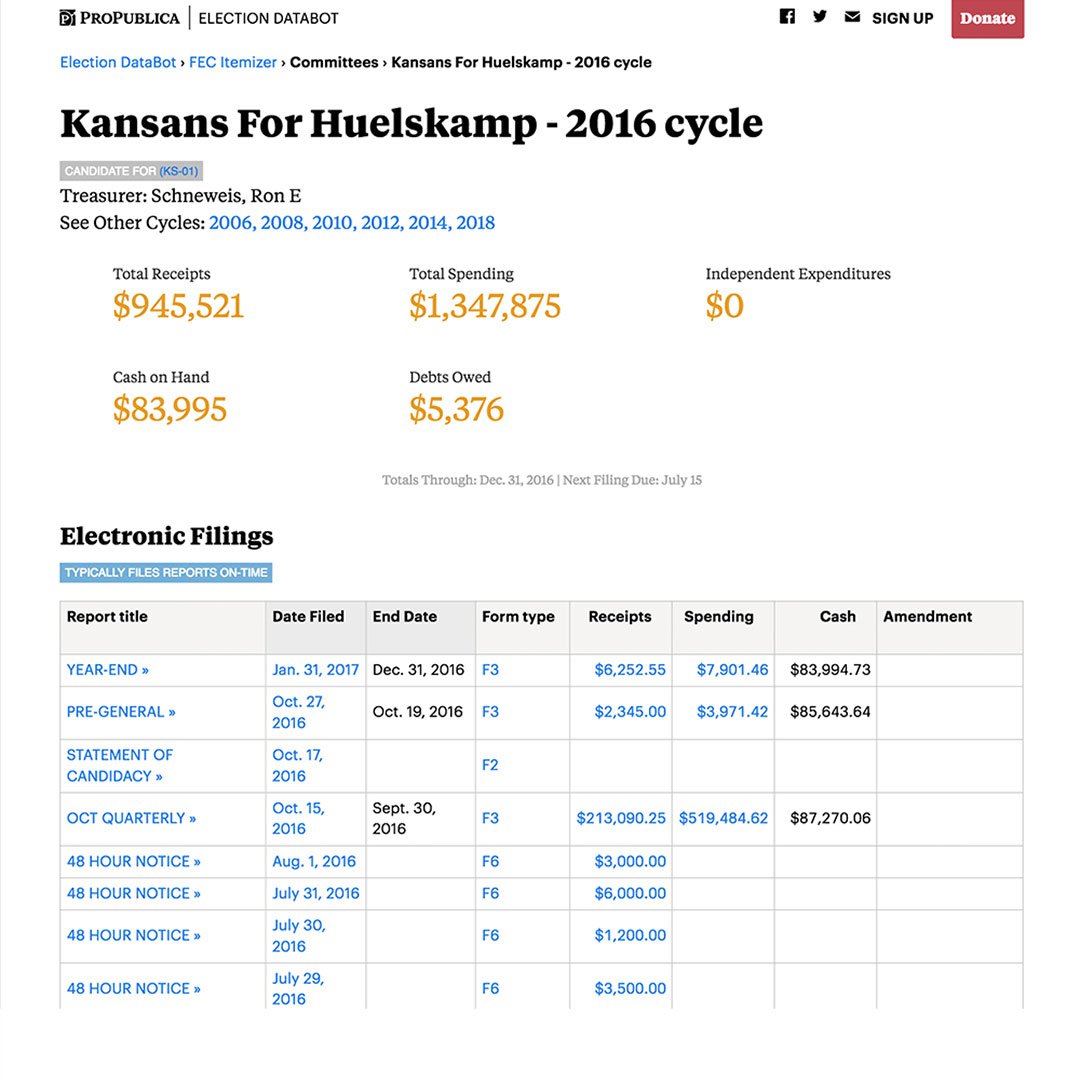
In the final weeks before a state or general election, House and Senate candidates are required to file reports to the FEC within 48 hours of receiving a contribution of $1,000 or more. These “48-Hour” reports can show that a candidate’s campaign is seeking donations from congressional colleagues, family members and out-of-state donors and can be an indication that a campaign believes it has a more difficult race than expected.
For example, the string of 48-Hour reports by then incumbent Kansas Republican Tim Huelskamp included contributions from his mother. Soon after, Huelskamp lost his primary.

Tracking data from polls.
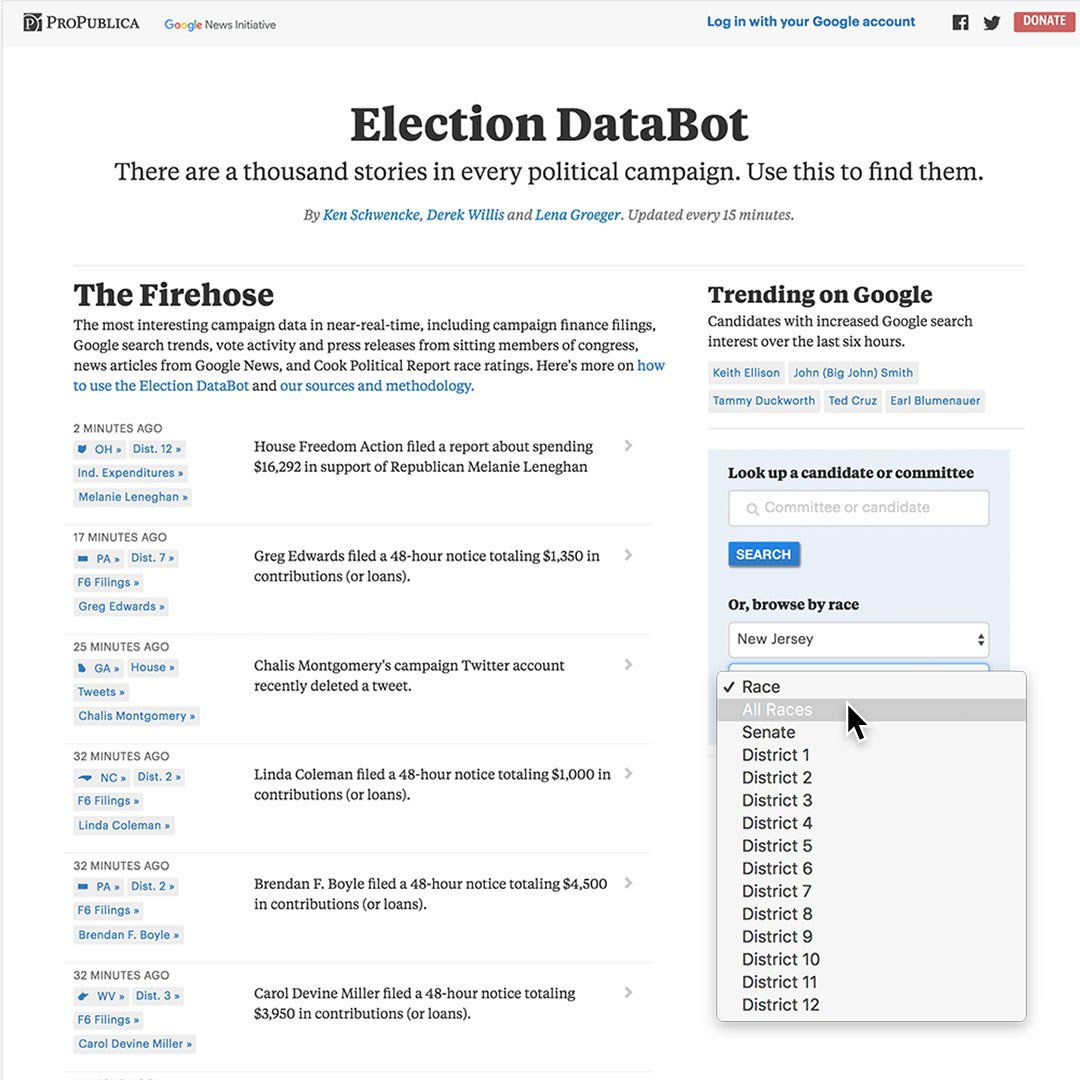
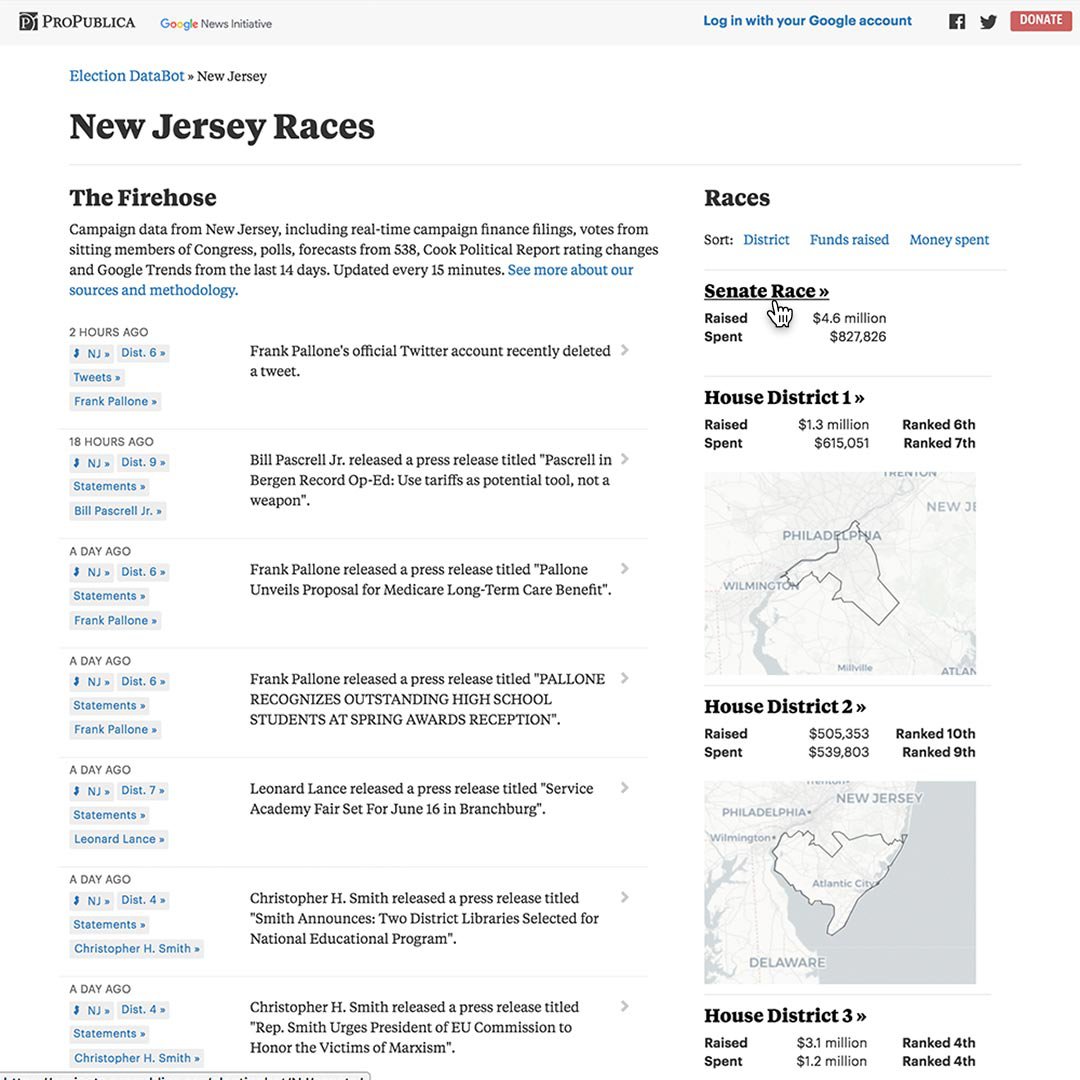
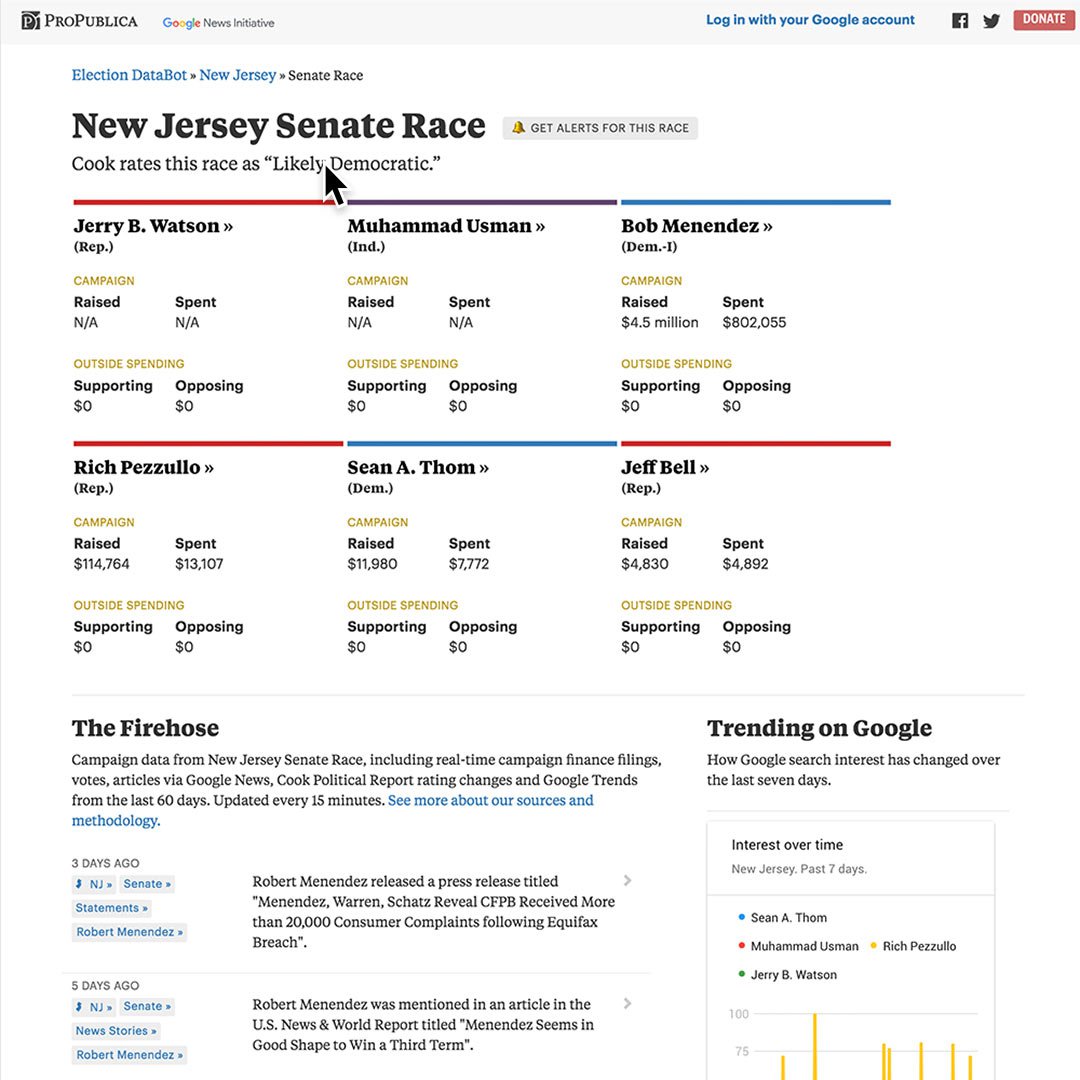
Polling and political analysis are not perfect, but they can both be useful tools for tracking an election. The Databot tracks both, providing alerts on new polls in the presidential and congressional races, election forecasts based on poll analysis, and race ratings.
We use Huffington Post Pollster API for polling data, FiveThirtyEight’s Election Forecast to provide win probabilities and the Cook Political Report for independent, nonpartisan analysis that rates each race on a spectrum of “Solid” to “Toss-Up.” When a poll or race rating changes, you can use that and other Election Databot information such as campaign finance filings, to try to understand why.
Say you want to see which way New Jersey’s senate race is polling.
Select New Jersey in the search box. Then click All Races.
Choose Senate Race.
You’ll see Cook Political Report rates this as a “Likely Democratic” win.



Learn from Google Trends search data.
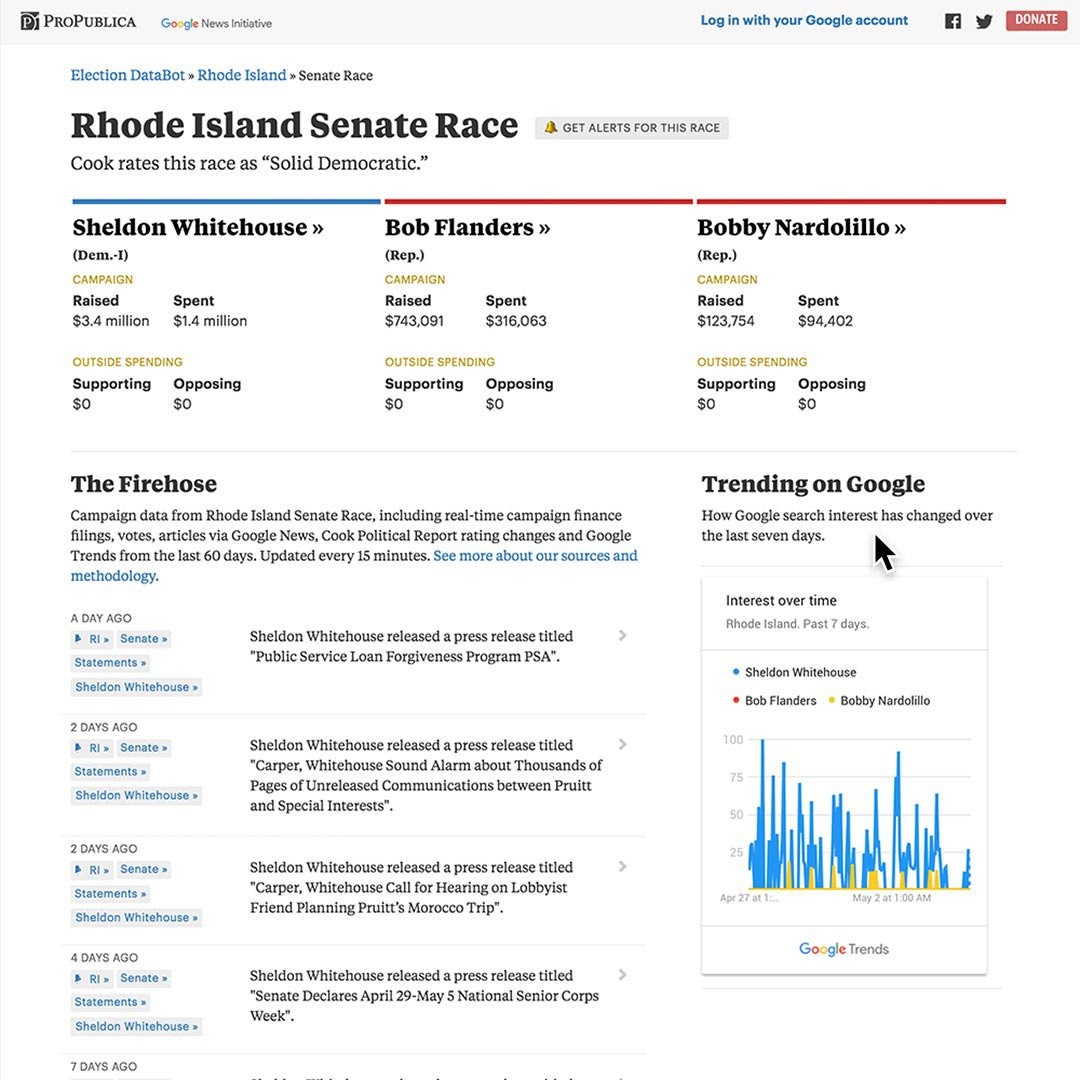
What internet users search for can be a useful indicator. While search interest is not a perfect predictor of electoral performance, it has caught the attention of researchers. In the 2016 Republican presidential primary, Google search interest tracked closely with results in a number of states.
The Databot uses data from Google Trends to show when search interest — represented by a sample of Google searches — increases for a particular candidate within his or her home state. Many candidates see relatively little search interest, so we try not to surface small increases, instead looking for rising interest over a number of hours.

Setting alerts for races you care about.
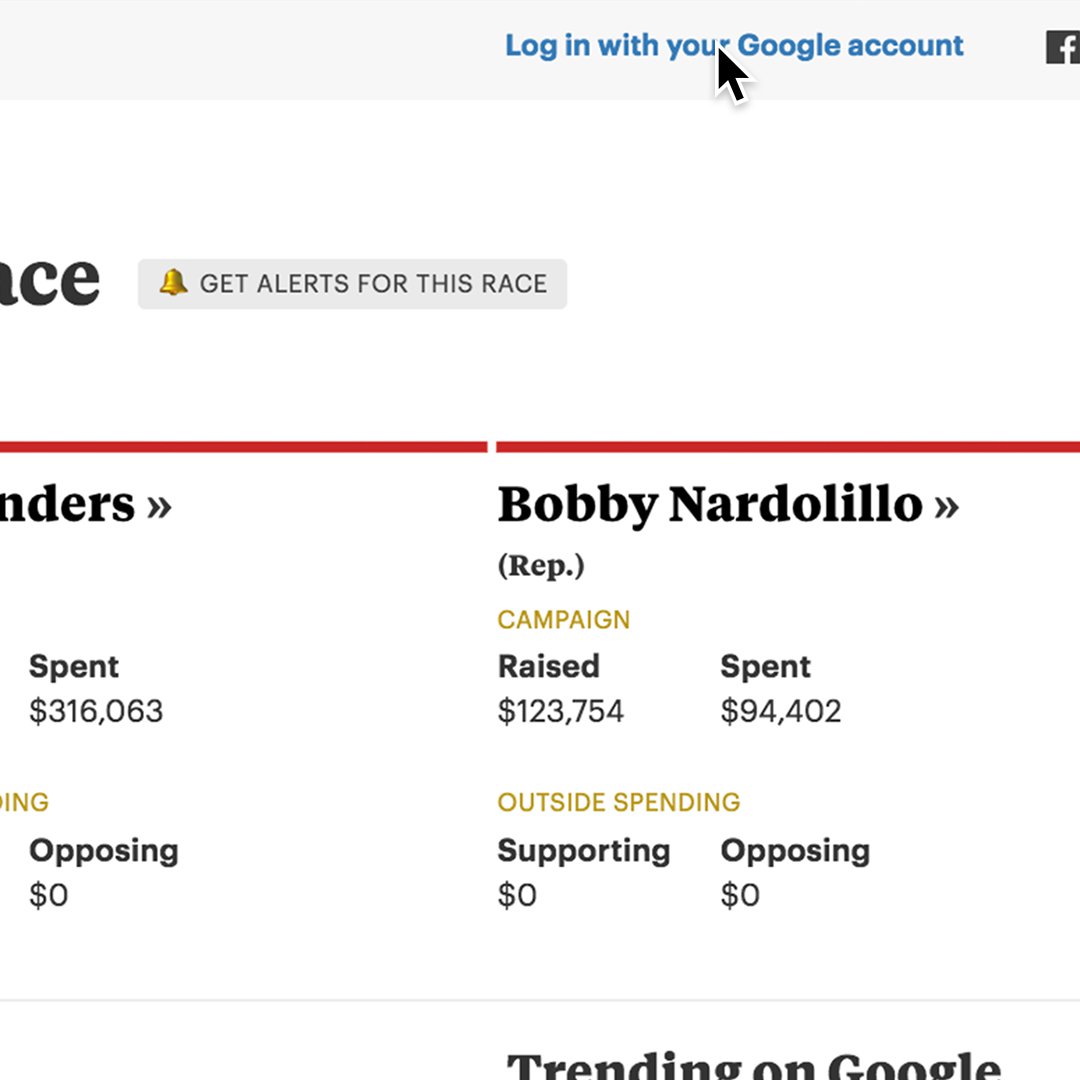
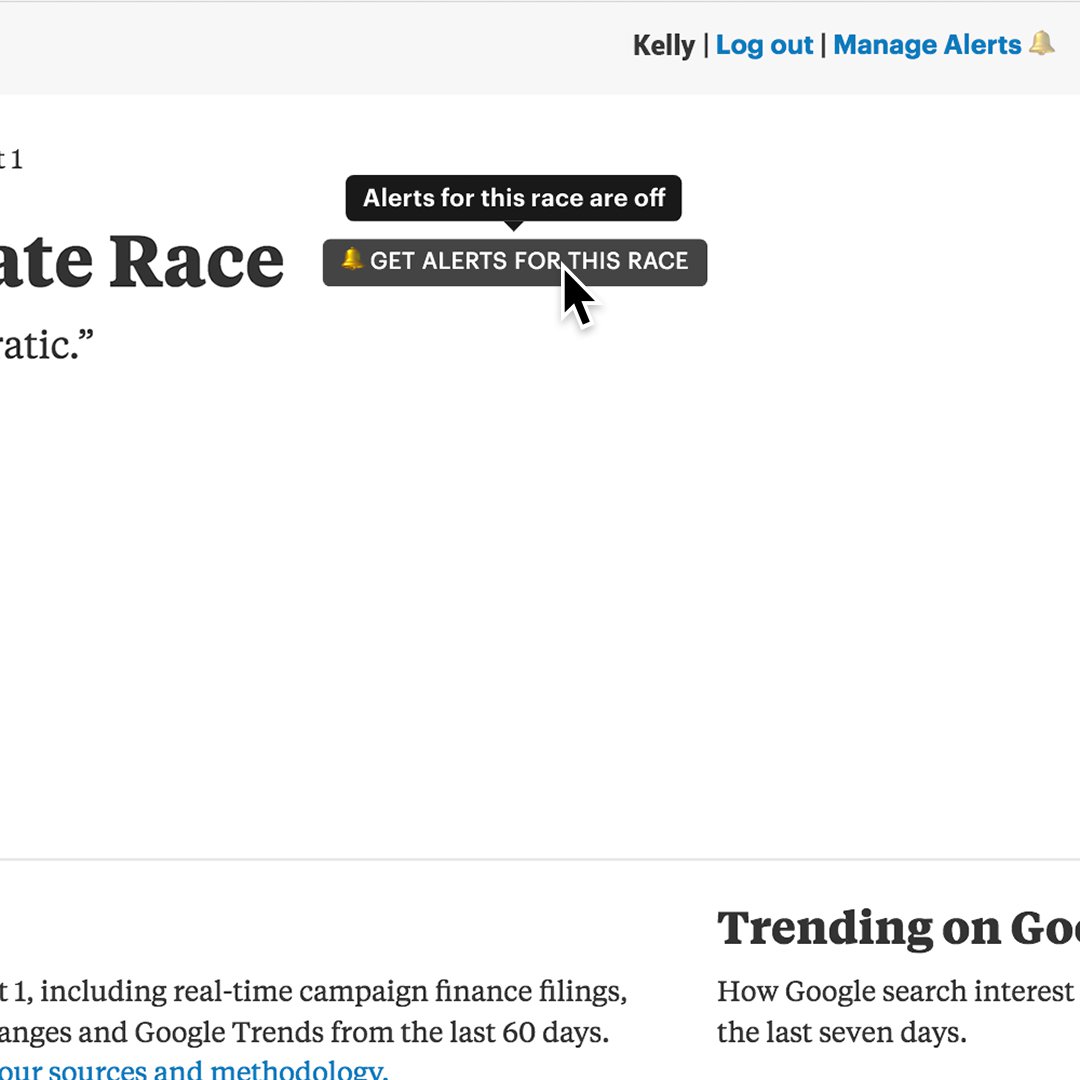
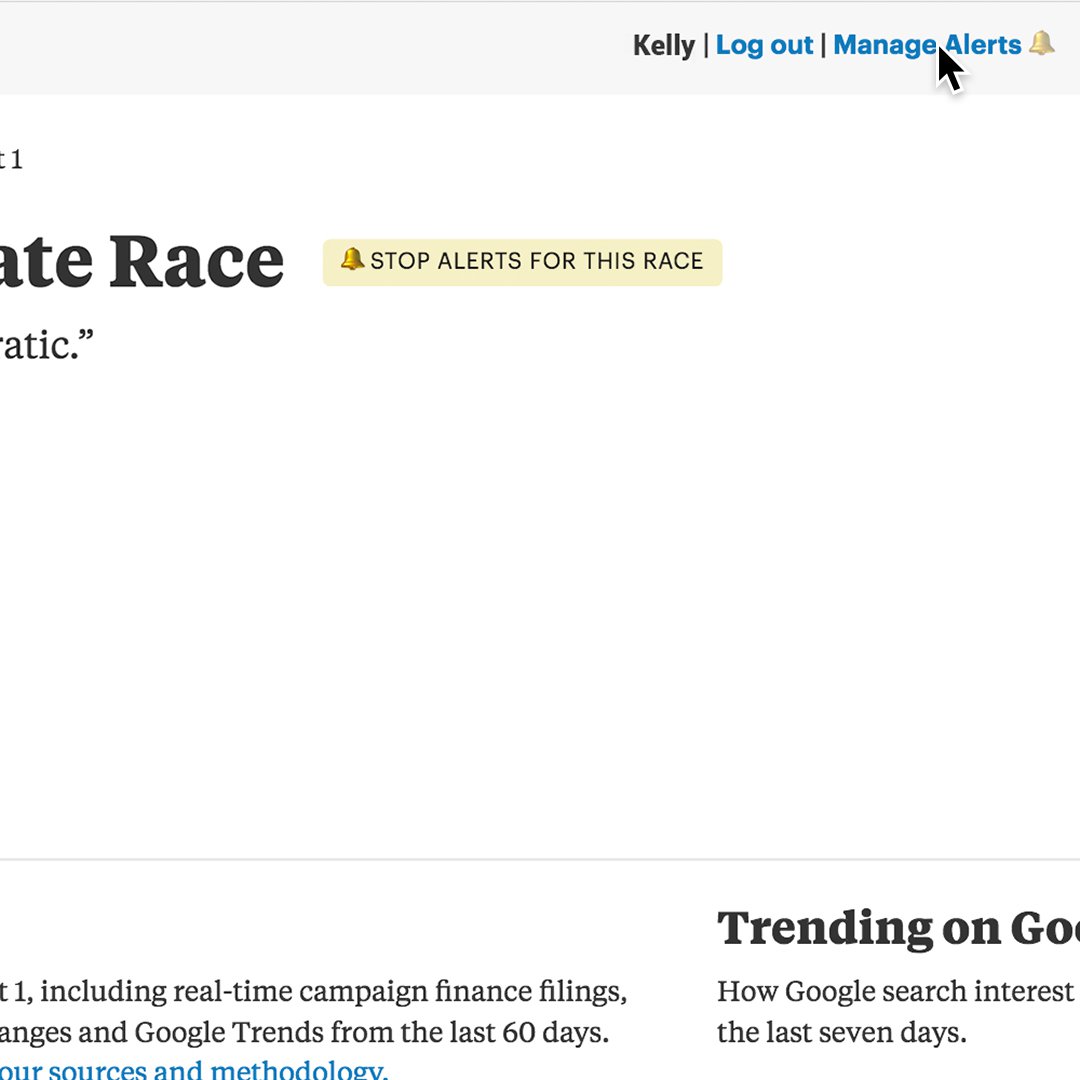
Following a specific race? You can set alerts to notify you when new filing or data points happen.
Navigate to the race you want to follow and sign into your Google account.
Click Get alerts for this race.
You can edit and manage alerts by clicking on Manage alerts on the top right. This will enable you to customise the elections you follow and frequency of emails you receive.



More ways to learn about Election Databot.
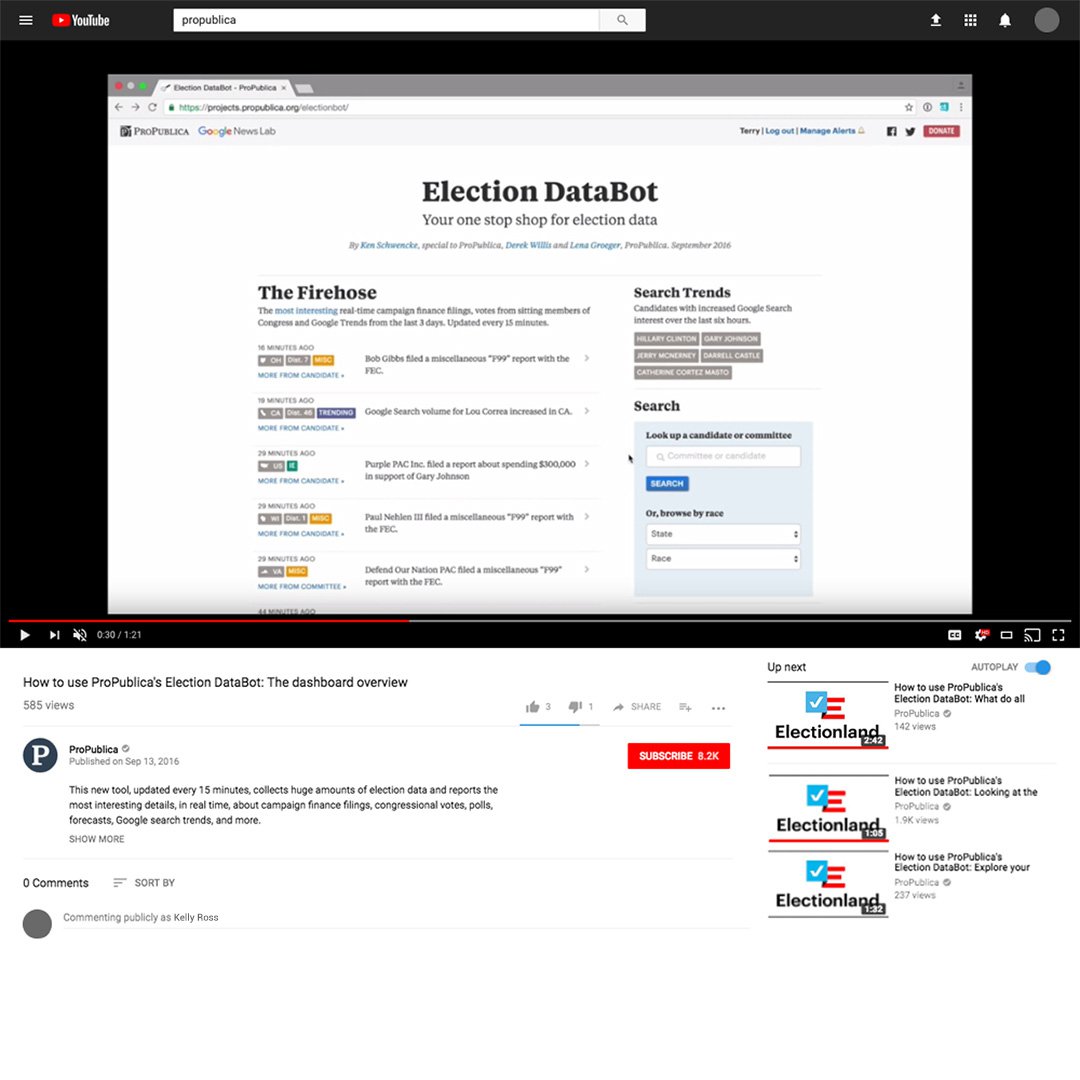
For additional tutorials on Databot, watch our series of YouTube videos.
Read our Medium article by Google News Initiative Data Editor Simon Rogers: Election Databot: Harnessing the power of the matrix

-
-
-
Google Translate: Verify content in 100+ languages.
AulaInterpret descriptions, uploader information and place names.






